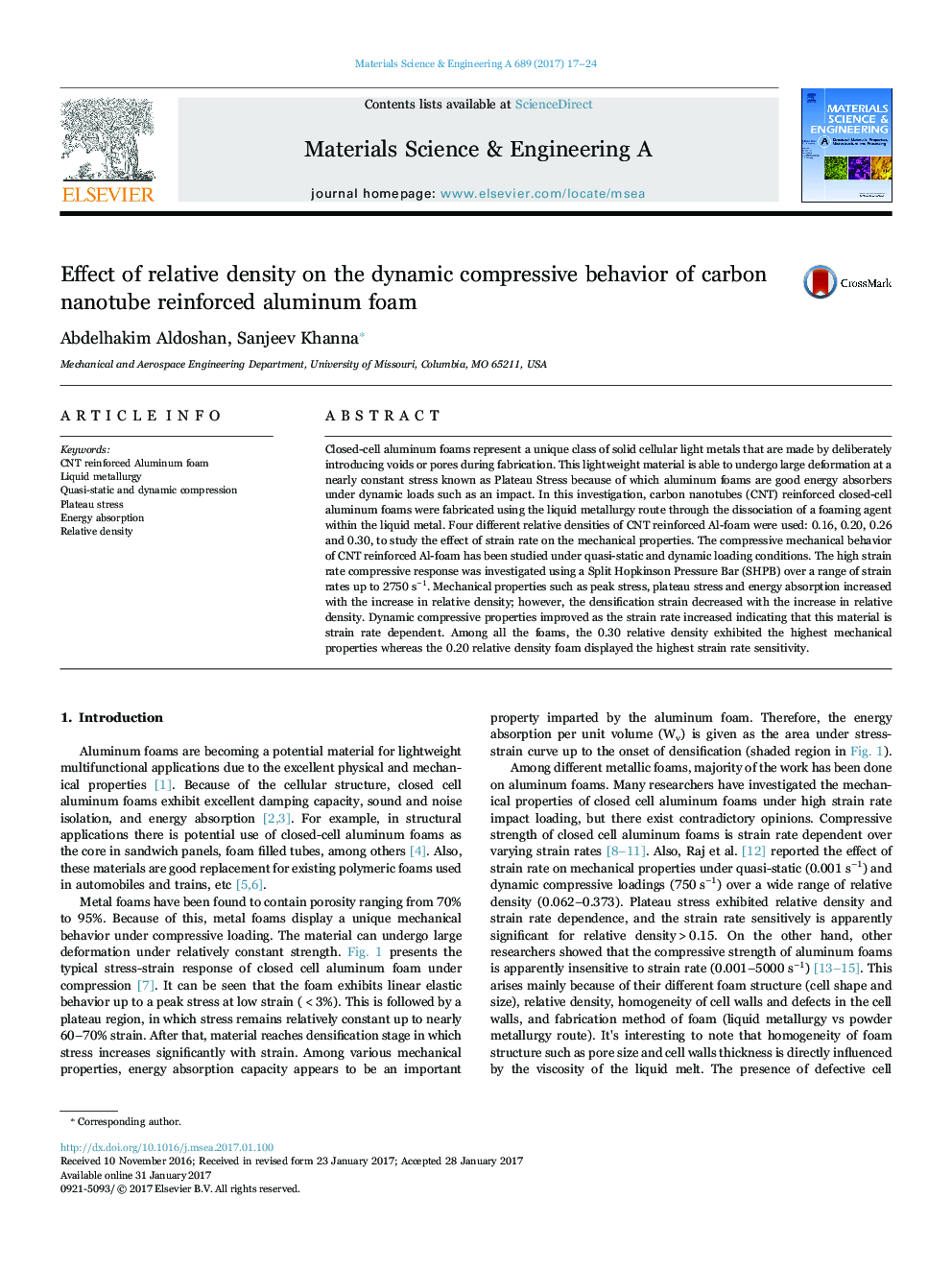| Article ID | Journal | Published Year | Pages | File Type |
|---|---|---|---|---|
| 5456483 | Materials Science and Engineering: A | 2017 | 8 Pages |
Closed-cell aluminum foams represent a unique class of solid cellular light metals that are made by deliberately introducing voids or pores during fabrication. This lightweight material is able to undergo large deformation at a nearly constant stress known as Plateau Stress because of which aluminum foams are good energy absorbers under dynamic loads such as an impact. In this investigation, carbon nanotubes (CNT) reinforced closed-cell aluminum foams were fabricated using the liquid metallurgy route through the dissociation of a foaming agent within the liquid metal. Four different relative densities of CNT reinforced Al-foam were used: 0.16, 0.20, 0.26 and 0.30, to study the effect of strain rate on the mechanical properties. The compressive mechanical behavior of CNT reinforced Al-foam has been studied under quasi-static and dynamic loading conditions. The high strain rate compressive response was investigated using a Split Hopkinson Pressure Bar (SHPB) over a range of strain rates up to 2750Â sâ1. Mechanical properties such as peak stress, plateau stress and energy absorption increased with the increase in relative density; however, the densification strain decreased with the increase in relative density. Dynamic compressive properties improved as the strain rate increased indicating that this material is strain rate dependent. Among all the foams, the 0.30 relative density exhibited the highest mechanical properties whereas the 0.20 relative density foam displayed the highest strain rate sensitivity.
